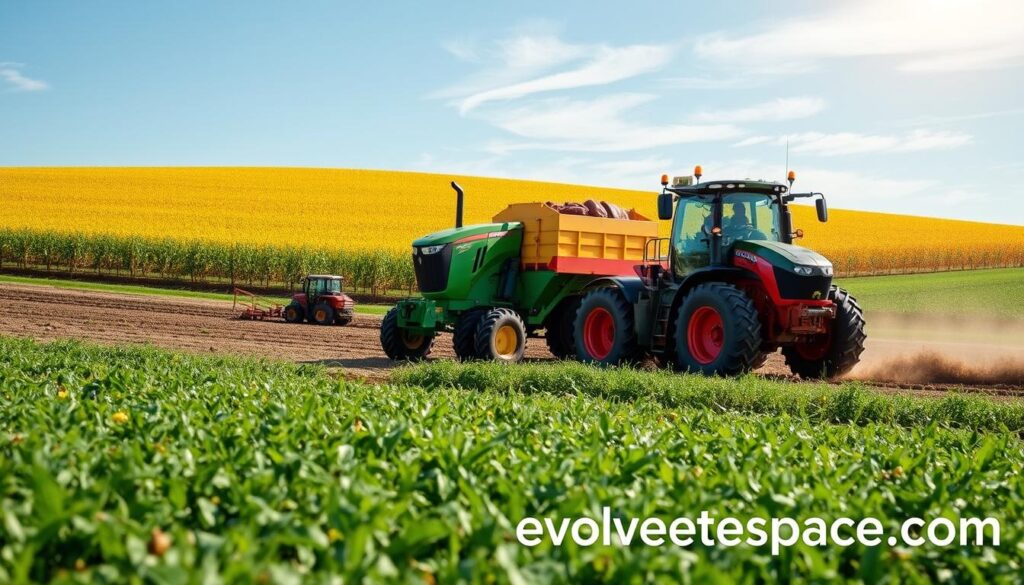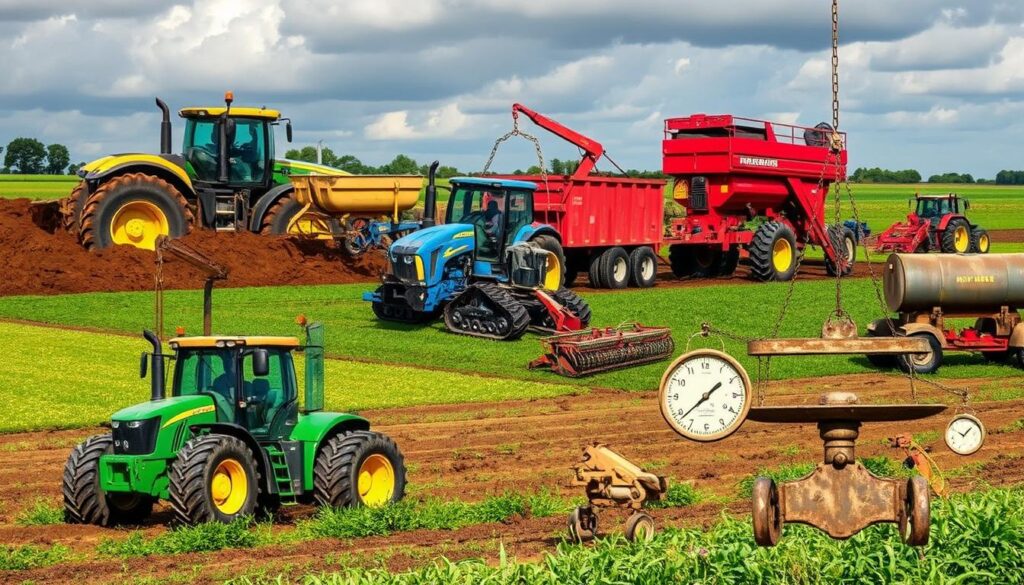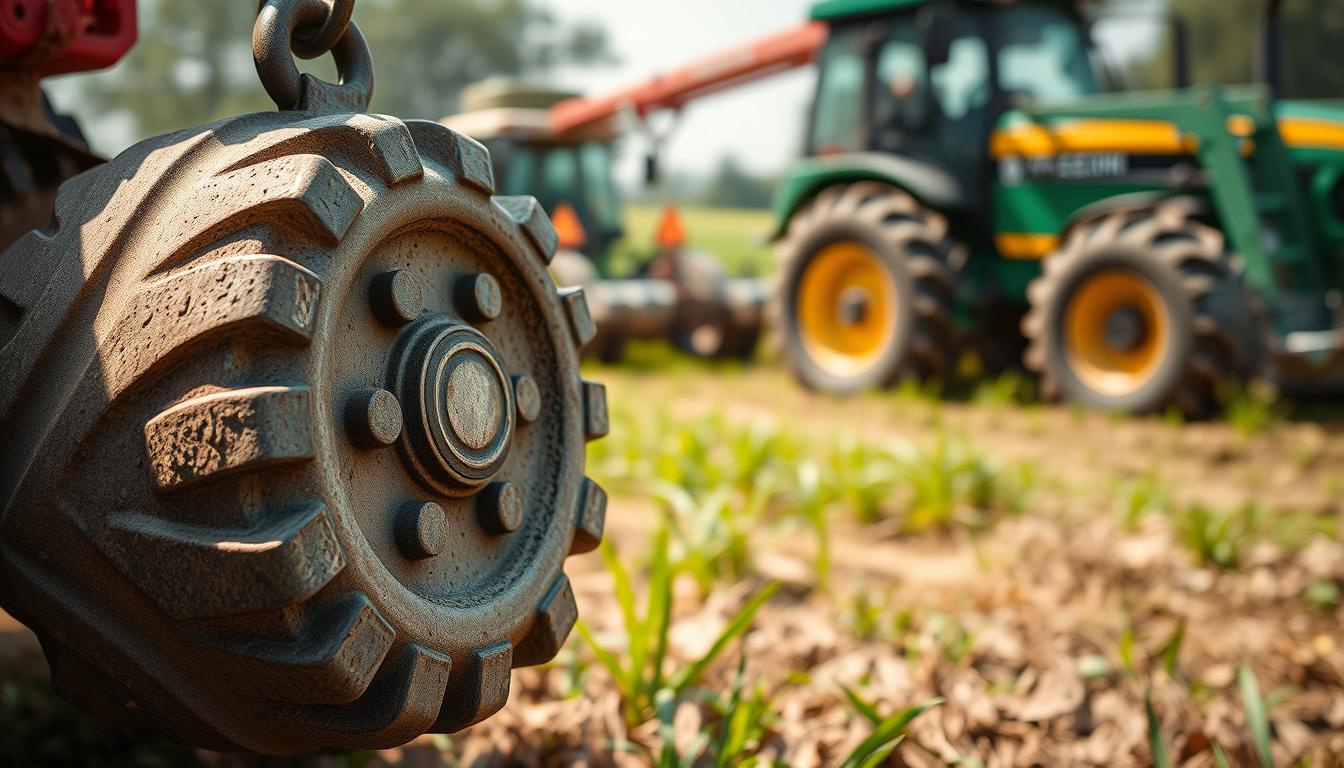As a farmer, I’ve always been fascinated by the intricate relationship between the weight of my equipment and its performance in the field. It’s a delicate balance that can make all the difference in the world, determining everything from fuel efficiency to soil compaction. And when I first learned about the concept of “caseoh weight,” I’ll admit, I was a bit skeptical. But the more I dove into the subject, the more I realized just how crucial it is for achieving optimal results on my farm.
You see, caseoh weight isn’t just some abstract number – it’s a critical factor that can make or break the success of your agricultural operations. It’s about finding the perfect equilibrium between the weight of your equipment and the demands of your specific farming environment. Get it right, and you’ll unlock a whole new level of productivity, efficiency, and profitability. Get it wrong, and you could be facing a slew of challenges, from reduced traction to increased wear and tear on your machinery.
That’s why I’m so excited to share what I’ve learned about caseoh weight and its impact on agricultural equipment. In this article, we’ll dive deep into the principles of weight distribution, explore the evolution of caseoh weight systems, and uncover the key components that make up these intricate weight management solutions. By the end, you’ll have a better understanding of how to optimize the weight of your farm machinery for maximum performance and long-term sustainability.
Key Takeaways
- Caseoh weight is a critical factor in optimizing the performance and efficiency of agricultural equipment.
- Understanding the principles of weight distribution and their impact on farm operations is essential for maximizing productivity.
- The evolution of caseoh weight systems has led to more sophisticated and adaptive solutions for managing equipment weight.
- Properly configured weight systems can provide significant benefits, including improved traction, reduced soil compaction, and enhanced fuel economy.
- Calculating optimal weight requirements and addressing common challenges in equipment weight management are key to achieving optimal results.
Introduction to Agricultural Equipment Weight Management
Efficient weight management is a crucial aspect of operating agricultural equipment. The distribution and balance of weight across farm machinery can have a significant impact on its performance, fuel efficiency, and overall productivity. In this section, we will delve into the basic principles of equipment weight distribution and explore how it affects farm operations.
Basic Principles of Equipment Weight Distribution
The proper distribution of weight in agricultural equipment is essential for achieving optimal traction, stability, and maneuverability. Factors such as the placement of heavy components, load positioning, and the balance between front and rear weight can greatly influence the equipment’s handling and performance. Understanding these fundamental principles is crucial for maximizing the effectiveness of agricultural equipment weight management.
Impact on Farm Operations
The way in which agricultural equipment is weighted can have a direct impact on various farm operations. Proper weight distribution can enhance traction and reduce soil compaction, leading to improved fuel efficiency and reduced wear and tear on the equipment. Conversely, improper weight management can result in decreased stability, reduced maneuverability, and increased strain on the equipment, ultimately affecting the overall productivity and profitability of the farm.
| Factor | Impact on Farm Operations |
|---|---|
| Traction | Improved traction reduces soil compaction, enhances fuel efficiency, and minimizes equipment wear and tear. |
| Stability | Proper weight distribution ensures greater stability, allowing for safer and more efficient operation of farm machinery. |
| Maneuverability | Balanced weight distribution improves the equipment’s handling, making it easier to navigate through tight spaces and perform complex tasks. |
By understanding the fundamental principles of agricultural equipment weight management and its impact on farm operations, farmers and equipment operators can make informed decisions to optimize the performance and efficiency of their machinery, ultimately improving the overall productivity and profitability of their agricultural operations.
The Evolution of Caseoh Weight Systems
The development of caseoh weight systems has been a crucial aspect of the agricultural equipment industry, driving advancements in farming practices and efficiency. Over the years, these systems have undergone significant transformations, adapting to the changing needs of farmers and the ever-evolving agricultural landscape.
In the early days, agricultural equipment relied on basic weight distribution methods, often involving manual adjustments and trial-and-error approaches. However, as the industry progressed, engineers and manufacturers recognized the importance of optimizing equipment weight for improved performance and productivity.
One of the pioneering innovations in caseoh weight systems was the introduction of adjustable ballast systems. These systems allowed farmers to fine-tune the weight distribution of their equipment, enabling them to better adapt to different soil conditions, terrain, and crop requirements. This flexibility proved instrumental in enhancing the overall efficiency and effectiveness of farm operations.
As technology continued to advance, the caseoh weight systems evolved further, incorporating advanced sensors, electronic controls, and sophisticated algorithms. These advancements enabled more precise and automated weight management, reducing the burden on operators and ensuring optimal weight distribution throughout the equipment’s lifecycle.
Today, caseoh weight systems are an integral part of modern agricultural equipment, seamlessly integrating with other precision farming technologies to deliver a comprehensive solution for weight management. These systems not only enhance productivity but also contribute to improved fuel efficiency, reduced soil compaction, and enhanced operator comfort, ultimately leading to a more sustainable and profitable farming operation.
The evolution of caseoh weight systems is a testament to the industry’s commitment to innovation and its unwavering pursuit of enhancing the efficiency and effectiveness of agricultural equipment. As the farming sector continues to adapt to new challenges and opportunities, the advancements in weight management systems will undoubtedly play a pivotal role in shaping the future of modern agriculture.
Key Components of Agricultural Equipment Weight Systems
Optimizing the weight distribution of agricultural equipment is crucial for enhancing performance, stability, and safety. At the heart of this process are three key components: front-end weight distribution, rear ballast configuration, and center of gravity considerations. These elements work in tandem to ensure that your farm machinery operates at its peak potential, delivering maximum efficiency and productivity.
Front-End Weight Distribution
The weight carried on the front-end of your agricultural equipment plays a vital role in traction, steering, and overall balance. Proper front-end weight distribution helps to prevent wheel slippage, improves responsiveness, and ensures the equipment remains stable even during demanding field operations. Carefully adjusting the weight on the front axle can significantly enhance the metabolism booster of your farming machinery, ultimately leading to better fuel efficiency and reduced wear and tear.
Rear Ballast Configuration
The rear ballast configuration of your agricultural equipment weight systems is equally important. By strategically placing weighted components, such as water-filled tires or rear-mounted counterweights, you can achieve the optimal weight distribution for your specific farming equipment. This not only improves traction and stability but also helps to maintain proper weight balance, ensuring your machinery remains responsive and maneuverable in the field.
Center of Gravity Considerations
The center of gravity is a crucial factor in the overall stability and handling of your agricultural equipment. By carefully managing the position of the center of gravity, you can enhance the equipment’s stability, reduce the risk of rollovers, and improve its ability to navigate uneven terrain. Proper center of gravity positioning also plays a vital role in maximizing the efficiency and performance of your farming machinery.
Understanding and optimizing these key components of agricultural equipment weight systems is essential for maintaining a productive and efficient farming operation. By focusing on front-end weight distribution, rear ballast configuration, and center of gravity considerations, you can unlock the full potential of your farming equipment, ensuring it operates at its best throughout the growing season.
Benefits of Proper Weight Distribution in Farm Machinery
Maintaining proper weight distribution in farm machinery is crucial for optimal equipment performance and productivity. By striking the right balance, farmers can reap a multitude of advantages that enhance their overall farming operations.
One of the primary benefits of proper weight distribution is improved traction. When the weight of the equipment is evenly distributed, it ensures better grip on the terrain, allowing the machinery to navigate through fields with greater ease and efficiency. This, in turn, translates to enhanced farm machinery efficiency and reduced soil compaction, preserving the integrity of the land for future use.
Another key advantage is enhanced fuel efficiency. Properly balanced equipment requires less power to operate, resulting in lower fuel consumption. This not only saves farmers money on fuel costs but also contributes to reducing the environmental impact of their farming practices.
Lastly, proper weight distribution can lead to increased productivity. When the equipment is optimized for balance, it allows for faster and more seamless field operations, enabling farmers to cover more ground in less time. This boost in efficiency can have a significant impact on overall farm productivity and profitability.

By prioritizing proper weight distribution, farmers can unlock a multitude of benefits that enhance the performance and sustainability of their farm machinery. From improved traction and fuel efficiency to increased productivity, the advantages of this crucial aspect of equipment management are undeniable.
Calculating Optimal Weight Requirements for Different Equipment Types
Determining the optimal weight requirements for various agricultural equipment is crucial for ensuring efficient and safe farm operations. This section delves into the key aspects of weight calculations, including tractor weight considerations, implement weight ratios, and essential safety margin factors.
Tractor Weight Calculations
The weight of a tractor plays a vital role in its performance and the overall efficiency of farm work. Proper tractor weight calculations involve balancing the vehicle’s front and rear weight distribution to achieve optimal traction, maneuverability, and stability. Factors such as engine size, implement attachments, and terrain conditions must be carefully evaluated to determine the ideal tractor weight for a specific farm operation.
Implement Weight Ratios
In addition to tractor weight, the weight of agricultural implements, such as plows, harrows, and sprayers, must be taken into account. The optimal implement weight ratio, in relation to the tractor’s weight, is essential for achieving maximum productivity and minimizing soil compaction. Careful calculations ensure that the implement’s weight is properly balanced and does not exceed the tractor’s capacity, compromising safety and performance.
Safety Margin Considerations
When calculating optimal weight requirements, it is crucial to incorporate a safety margin to account for unexpected factors and ensure the overall stability and control of the agricultural equipment. This safety margin allows for adjustments in weight distribution, accommodates changes in terrain or weather conditions, and provides a buffer against potential accidents or equipment failures.
“Proper weight management is the foundation of efficient and safe agricultural operations, maximizing productivity while minimizing risks and environmental impact.”
By carefully considering tractor weight calculations, implement weight ratios, and safety margin factors, farmers and equipment operators can optimize the weight requirements for their agricultural machinery, leading to improved performance, enhanced safety, and sustainable farm practices.
Common Challenges in Equipment Weight Management
Managing the weight of agricultural machinery is a crucial aspect of efficient farm operations. However, equipment weight management can present various challenges that can impact productivity and profitability. Understanding these common challenges is the first step towards developing effective solutions.
One of the primary issues faced by farmers is improper weight distribution. When the weight of the equipment is not evenly balanced, it can lead to decreased stability, reduced traction, and increased strain on the machinery. This can ultimately result in decreased efficiency, higher fuel consumption, and even potential safety hazards.
Another common challenge is the overloading of equipment. Exceeding the recommended weight capacity can cause significant damage to the machinery, leading to costly repairs and downtime. Overloading can also compromise the performance and safety of the equipment, putting both the operator and the surrounding environment at risk.
- Improper weight distribution
- Overloading of equipment
- Underutilization of weight management systems
Furthermore, the underutilization of weight management systems can also be a significant challenge. Farmers may not fully understand the importance of these systems or may not have the necessary knowledge to optimize their use. This can result in suboptimal weight distribution and missed opportunities to improve the efficiency and longevity of their agricultural machinery.
| Challenge | Potential Consequences | Solutions |
|---|---|---|
| Improper weight distribution | Decreased stability, reduced traction, increased strain on machinery | Utilize front-end weights, rear ballast, and optimize center of gravity |
| Overloading of equipment | Damage to machinery, decreased performance, safety risks | Adhere to recommended weight capacity, regularly inspect equipment |
| Underutilization of weight management systems | Suboptimal weight distribution, missed opportunities for efficiency | Educate operators, utilize digital monitoring and automated adjustment systems |
To overcome these challenges, farmers should strive to maintain a natural weight management approach, ensuring their agricultural machinery is properly balanced and operated within the recommended weight limits. By addressing these common equipment weight challenges, they can optimize the performance, safety, and longevity of their farm equipment, ultimately enhancing their overall agricultural operations.

Seasonal Adjustments and Weight Modifications
In the ever-evolving world of agricultural equipment, the ability to adapt to seasonal changes is paramount. As farmers transition from the spring planting season to the demanding harvest period, their equipment must be flexible enough to handle the shifting operational requirements. This is where the importance of seasonal weight adjustments and modifications comes into play.
Spring Operation Requirements
During the spring months, agricultural equipment often needs to navigate softer, wetter soil conditions. To ensure optimal traction and stability, farmers may need to adjust the weight distribution of their machinery. This could involve adding front-end weights or reconfiguring rear ballast systems to enhance the equipment’s ability to navigate through the challenging spring terrain without compromising productivity.
Harvest Season Adaptations
As the harvest season approaches, the focus shifts to maximizing the carrying capacity of agricultural equipment. Farmers may need to modify their machinery to accommodate the increased weight of harvested crops, ensuring efficient and safe transport. This could involve adjustments to the calorie deficit support systems, seasonal weight adjustments, or even agricultural equipment modifications to optimize the equipment’s weight distribution and stability during the demanding harvest period.
By understanding the unique requirements of each farming season and implementing the necessary weight adjustments, farmers can ensure their equipment remains versatile, efficient, and reliable throughout the year, ultimately enhancing their productivity and profitability.
Maintenance and Safety Considerations for Weight Systems
Maintaining the health and proper functioning of agricultural equipment’s weight systems is crucial for efficient and safe operations. Regular inspections and diligent maintenance procedures are essential to ensure the longevity and reliable performance of these critical components.
One key aspect of weight system maintenance is routine inspections. Farmers should visually check for any signs of wear, damage, or looseness in the weight distribution mechanisms, including the ballast, front-end weights, and suspension systems. Identifying and addressing minor issues promptly can prevent more significant problems down the line.
- Regularly grease and lubricate all moving parts to minimize friction and wear.
- Ensure that all fasteners, such as bolts and clamps, are securely tightened to maintain the integrity of the weight system.
- Monitor tire pressure and tread depth to maintain proper weight distribution and traction.
In addition to maintenance, safety protocols are crucial when working with agricultural equipment weight systems. Operators should always exercise caution when making adjustments, adding or removing weights, or performing any maintenance tasks. Proper personal protective equipment (PPE), such as gloves and safety glasses, should be worn to mitigate the risk of injury.
“Maintaining the health and proper functioning of agricultural equipment’s weight systems is crucial for efficient and safe operations.”
By prioritizing the healthy weight control, weight system maintenance, and agricultural equipment safety, farmers can ensure the reliable and safe operation of their machinery, optimizing productivity and minimizing the risk of accidents or equipment failures.
Modern Technologies in Weight Distribution Systems
In the ever-evolving world of modern agriculture, the weight distribution of agricultural equipment has become a critical factor in achieving optimal performance and efficiency. Innovative technologies are now transforming the way farmers and equipment manufacturers approach this crucial aspect of farm operations.
Digital Weight Monitoring
One of the most significant advancements in weight distribution systems is the introduction of digital weight monitoring technologies. These systems utilize advanced sensors and data analytics to provide real-time information on the weight distribution of agricultural equipment, enabling farmers to make informed decisions and adjustments. By precisely tracking the weight distribution across different components, such as the front end, rear ballast, and center of gravity, digital weight monitoring helps ensure that the equipment is properly balanced for maximum efficiency and safety.
Automated Adjustment Systems
Complementing the digital weight monitoring solutions, automated adjustment systems have emerged as a game-changer in the realm of agricultural equipment weight management. These cutting-edge technologies automatically adapt the weight distribution of the equipment based on the specific operational requirements, such as soil conditions, terrain, and crop types. Farmers can effortlessly maintain the optimal weight balance without the need for manual adjustments, leading to improved productivity, reduced fuel consumption, and enhanced overall equipment performance.
The integration of these modern weight distribution technologies in agricultural equipment not only enhances the efficiency of farm operations but also contributes to the broader industry initiatives, such as sustainable farming practices and precision agriculture. By optimizing the weight distribution, farmers can achieve improved fuel efficiency, reduced soil compaction, and enhanced equipment longevity, ultimately leading to more sustainable and productive farming practices.
As the agricultural industry continues to evolve, the advancements in weight distribution systems promise to play a crucial role in shaping the future of farming. By seamlessly combining digital monitoring and automated adjustment capabilities, these modern technologies empower farmers to maximize the performance and efficiency of their agricultural equipment, driving innovation and progress in the industry.
Conclusion
Throughout this article, we have explored the critical role of caseoh weight in optimizing the performance and efficiency of agricultural equipment. From understanding the basic principles of weight distribution to delving into the latest technologies in weight management systems, we have highlighted the significance of proper weight management for farm operations.
Caseoh weight is not merely a technical consideration, but a fundamental factor that directly impacts the productivity, safety, and longevity of farm machinery. By maintaining the right balance of weight across front-end, rear, and center of gravity, farmers can ensure their equipment operates at peak efficiency, reduces strain on the soil, and maximizes fuel economy.
As the agricultural industry continues to evolve, the importance of caseoh weight management will only continue to grow. By staying informed and implementing best practices, farmers can unlock the full potential of their equipment, ultimately enhancing the overall productivity and sustainability of their operations. The key to success lies in understanding the intricacies of weight distribution and leveraging the latest technologies to optimize the performance of their agricultural assets.




